Do you know what Katogo is?
Katogo is a traditional Ugandan dish often eaten for breakfast.
It is prepared by simmering green bananas, known as matoke, together with other ingredients.
This dish is perfect for breakfasts centered around bananas and other staples!
This time, we introduce katogo, a beloved staple dish in Uganda.
Please watch until the very end!
Additionally, TasteTune introduces cuisines from around the world and streams music that expresses those dishes♪
Available on YouTube, Spotify, and other platforms—enjoy it along with the article!
What is Katogo?
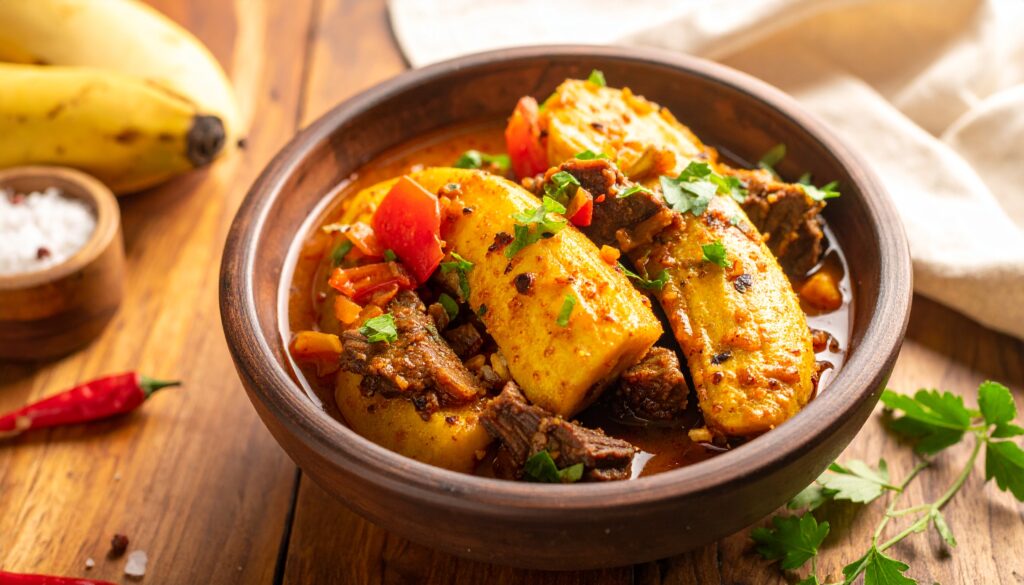
As mentioned earlier, katogo is a traditional dish beloved in Uganda.
The name “Katogo” comes from several Bantu languages in Uganda (particularly Luganda and others), and it is a word meaning “to mix,” “a collection of things,” or “a hodgepodge.”
In other words, the name reflects the style of cooking various ingredients together in a single pot.
This dish is made by simmering green bananas, known as matoke, along with beans, meat, and vegetables in a pot.
Matoeke is a “cooking banana” eaten as a staple food in East Africa, harvested before it ripens and becomes sweet for use in cooking.
Steaming, boiling, and mashing are common cooking methods, while in Katogo, it is simmered.
Katogo is based on the subtle sweetness and sticky texture of such matoke.
Adding beans, peanuts, meat, tomatoes, onions, spices, and other ingredients enhances the dish with umami, richness, acidity, and saltiness.
Sometimes a sauce made by sautéing tomatoes and onions is added.
In this case, it will have a tangy flavor.
In this way, by changing the ingredients and seasonings while keeping the base flavor of matoke, you can create a wide range of variations—from rich and hearty to light and refreshing.
TasteTune「Katogo」
Everyone, have you heard Tastetune's song “Katogo”?
This music is an energetic Afrobeat fusion piece inspired by Katogo, expressing Uganda's rhythms and communal joy through sound.
It begins with light percussion, marimba, and a groovy bassline, then builds as rhythmic guitar and bright synths join in. Eventually, it explodes into a powerful chorus woven from driving drums, brass stabs, and a celebratory melody.
This world of sound invites listeners into the cheerful gathering of people surrounding the koto.
Please give it a listen!
Below, we introduce the thoughts, expressions, and creative approaches embodied in this musical work.
A selection of sounds that evoke the spirit of Uganda
At the heart of this piece lies the rhythm that breathes through the Ugandan land and the resonant sound that evokes the vitality of its people.
The lively sounds of drums and marimbas evoke the simple yet rich flavor of the dish called katogo, as if playing the very essence of nature's bounty itself.
The undulating bass that joins in evokes the depth of the cuisine and the warm bonds that connect people.
Each and every sound expresses the richness of Uganda's nature and the strength of its way of life.
The rhythm and flow depicting the joy of community
The song begins gently and_ lightly, like preparing kato.
The rhythm of the guitar and its bright tones evoke the excitement of preparing a meal and the joy of ingredients blending together.
And during the climactic moments, powerful rhythms and the resonance of brass instruments intertwine, enveloping the scene in an atmosphere of excitement, as if people were gathered around a table celebrating.
It is a moment that symbolizes the richness of Katogo's flavor and the smiles of those who share it.
A story woven from cheerfulness and unity
Throughout this entire song, what comes across is “brightness,” “connection with friends,” and “heart-pounding joy.”
The warmth of moments spent together, where people gathered around the kotogoto naturally smile, is expressed directly through the sound.
Traditional resonance and modern enjoyment come together, delivering the depth of Ugandan culture and the joy found through food to those who listen.
The World of Katogo: Savored Through Sound
This piece of music is not just background music.
This is a small journey where you can experience through sound the “rich flavors” of a dish called Katogo, the “vibrant culture” of the country Uganda, and the “sight of people sharing joy together.”
If you listen closely, your heart will naturally be drawn into the world of Katogo.
Please surrender yourself to this tale of sound and savor its charm to your heart's content.
The History of Katogo
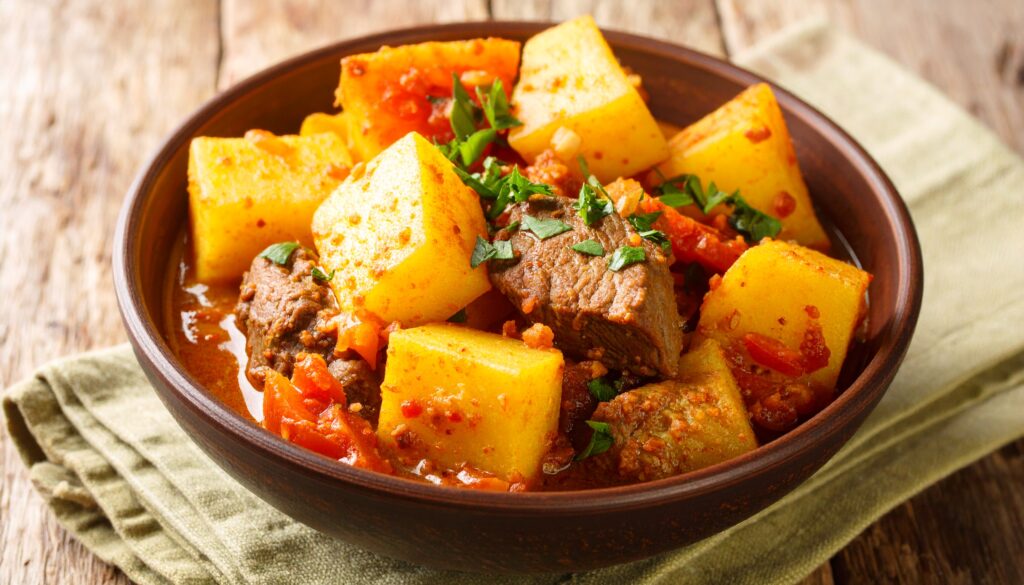
The earliest version of katogo was a simple stew made with cassava and beans.
It sometimes includes grains and root vegetables, and began as a form of “poor people's food” or everyday fare.
It was some time later that matoke began to be used in katogo.
The availability of matoke among middle- to upper-class individuals expanded the composition of katogo.
Later, variations incorporating not only beans but also meat, offal, and vegetables developed.
The materials used varied by region, and its defining feature was the immediacy of using whatever was available.
While kato was once strongly associated with being “poor people's food,” it has recently gained recognition as a staple breakfast item.
It is making a comeback in homes and restaurants alike, gaining renewed appreciation for its affordability, convenience, and nutritional value.
Katogo's Trivia & Fun Facts
Dishes Reflecting Social Class
In the past, it was also a dish that reflected social class, with versions made from common cassava for the common people and versions made from matoke for the wealthy.
However, due to factors such as its ease of cultivation and nutritional value, matoke gradually gained acceptance among the general public.
Nowadays, matoke-filled katogo has become a staple food for everyone.
With matoke added, it becomes a luxurious dish.
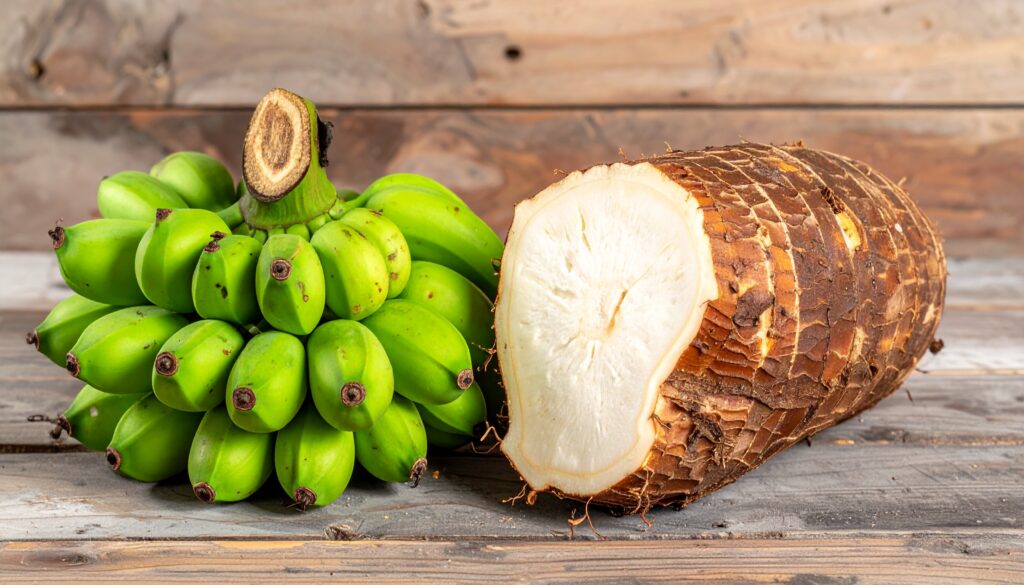
As mentioned in the historical section, katogo was originally a dish centered around cassava and similar ingredients.
However, with the addition of Matoke, it evolves in various ways.
As a result, katogo containing matoke once spread as a delicacy.
Breakfast presence
In Uganda, katogo is considered a “typical breakfast dish.”
The reason is that it allows you to incorporate meat, beans, and matooke all at once, making it highly nutritionally balanced.
Therefore, it is ideal for boosting energy before heading out to work or farm tasks.
Dishes that showcase individuality
Katogo varies in ingredients and seasoning depending on the household and region.
Meat and vegetables, such as beans and beef, are characterized by their wide variety and versatility.
It's a dish where every household has its own unique twist.
Internal organs
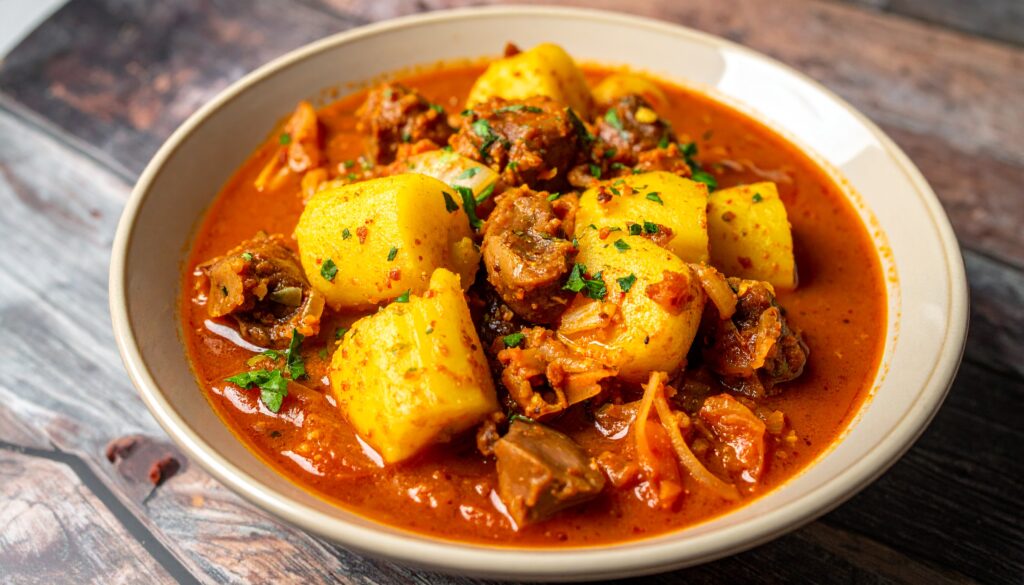
Byenda Katogo, made with beef offal, is a particularly popular variation in Uganda.
The rich flavor and aroma of the offal permeate the matoke, making it a staple as a traditional “hearty breakfast.”
How to Make Katogo
Ingredients (serves 4-6)
- Plantains (cooking bananas) … 15–20 (peeled)
- Tomatoes … 10 medium (diced)
- Onion … 1 (finely chopped)
- Scallions (green onions, thin onions, etc.) … 2 stalks (thinly sliced)
- Cooking oil … 1 teaspoon (for stir-frying) + ½ teaspoon (if adding at the end)
- Water … as needed (enough to nearly cover the matoke)
- Salt ... appropriate amount
- Black pepper … to taste
- (Optional) Sugar … a small amount (to adjust the acidity of the tomatoes)
How to make them
- Preparation
- Peel the matoke. Since the mucilage makes your hands and knife slippery, lightly coating them with oil makes handling easier.
- Peeled matoke should be soaked in water to prevent discoloration.
- Sauté the tomatoes and onions.
- Heat 1 teaspoon of oil in a pot, then add the onion and sauté until translucent.
- Add the tomatoes and simmer until they soften and form a paste.
- Add matoke
- Add the peeled matoke to the tomato and onion sauce.
- Add just enough water to cover the ingredients, then gently mix everything together.
- Stew
- Bring to a boil over high heat, then reduce to medium-low heat and simmer.
- Simmer the matoke for about 20 to 30 minutes until tender.
- At this point, season with salt and pepper.
- Finishing
- Adjust the concentration by evaporating water as needed.
- If the sourness is strong, add a small amount of sugar to balance it out.
- Scatter the scallions and add flavor to finish.
- Offering
- Serve while warm.
- Serving it with clarified butter and green vegetables makes it more authentic.
How to Prepare Matoke in Japan
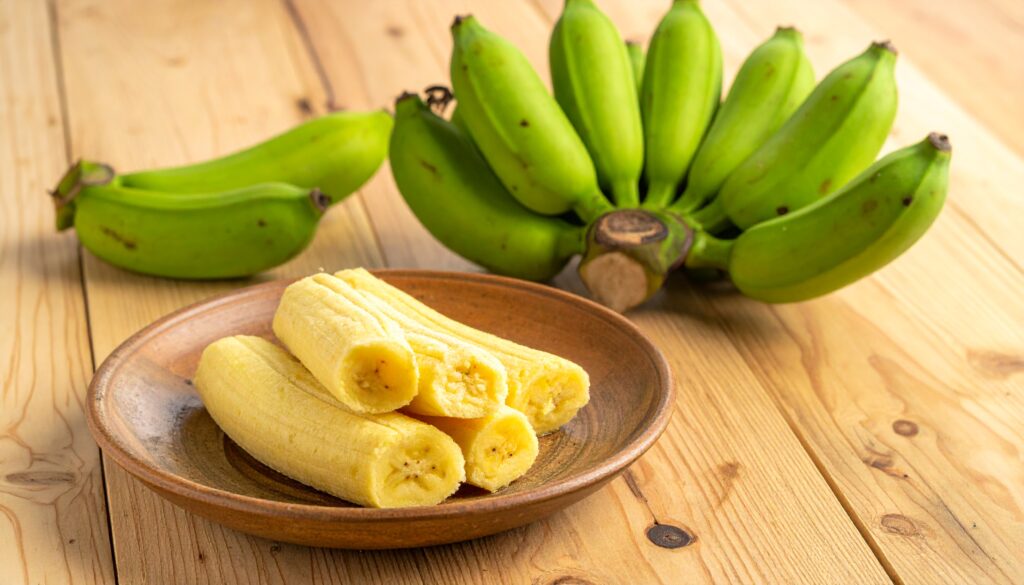
Matooke is widely cultivated in East Africa, including Uganda, but in reality, it is scarcely distributed in Japan.
However, several alternatives and methods of acquisition do exist.
1. Search at specialty imported food stores
- Specialty stores and online retailers that carry African ingredients may sell them frozen or as green cooking bananas.
- However, it is rarely distributed directly under the name “matoke”; it is more commonly imported as ‘plantain’ or “cooking banana.”
2. Substitute for plantain
- Plantains are a type of cooking banana widely consumed in Central and South America, Africa, and Asia. They can sometimes be found in Japan at specialty import stores and some large supermarkets.
- It's not exactly the same as matoke, but it's often used as a substitute in stews.
3. Alternative uses for unripe bananas
- Even ordinary bananas that are green and unripe contain more starch and less sweetness, so simmering them in a kato-go style yields a similar texture.
- The flavor is slightly different, but simmering it with tomatoes, onions, and seasonings can bring it closer to an “authentic local flavor.”
4. Bringing in via local routes
- ウガンダなどに縁のある方は、冷凍処理されたマトーケを持ち込むこともあるそうですが、これは個人輸入扱いになりハードルが高いです。
Points
- The most realistic option is to substitute with “plantains” or “green bananas.”.
- The texture differs slightly from matoke, but it is perfectly suitable for recipes such as katogo and steamed dishes.
Summary
How did you like it?
This time, we introduced katogo, Uganda's national dish and a staple breakfast.
I don't think you'd often find dishes in Japan where bananas are simmered together with meat and other ingredients.
I'm really curious about what it actually tastes like!
I've explained how to make it, but getting the matoke is the biggest hurdle.
If you're lucky enough to get your hands on one, that'd be great, but it probably won't be that easy.
While you might find it served at African restaurants in Japan, you'll need to do some research beforehand if you're specifically going for katogo.
Compared to other dishes, it has a slightly higher barrier to entry, but I think it's definitely worth seeking out!
May everyone be able to eat katogo!
Thank you for watching until the very end!
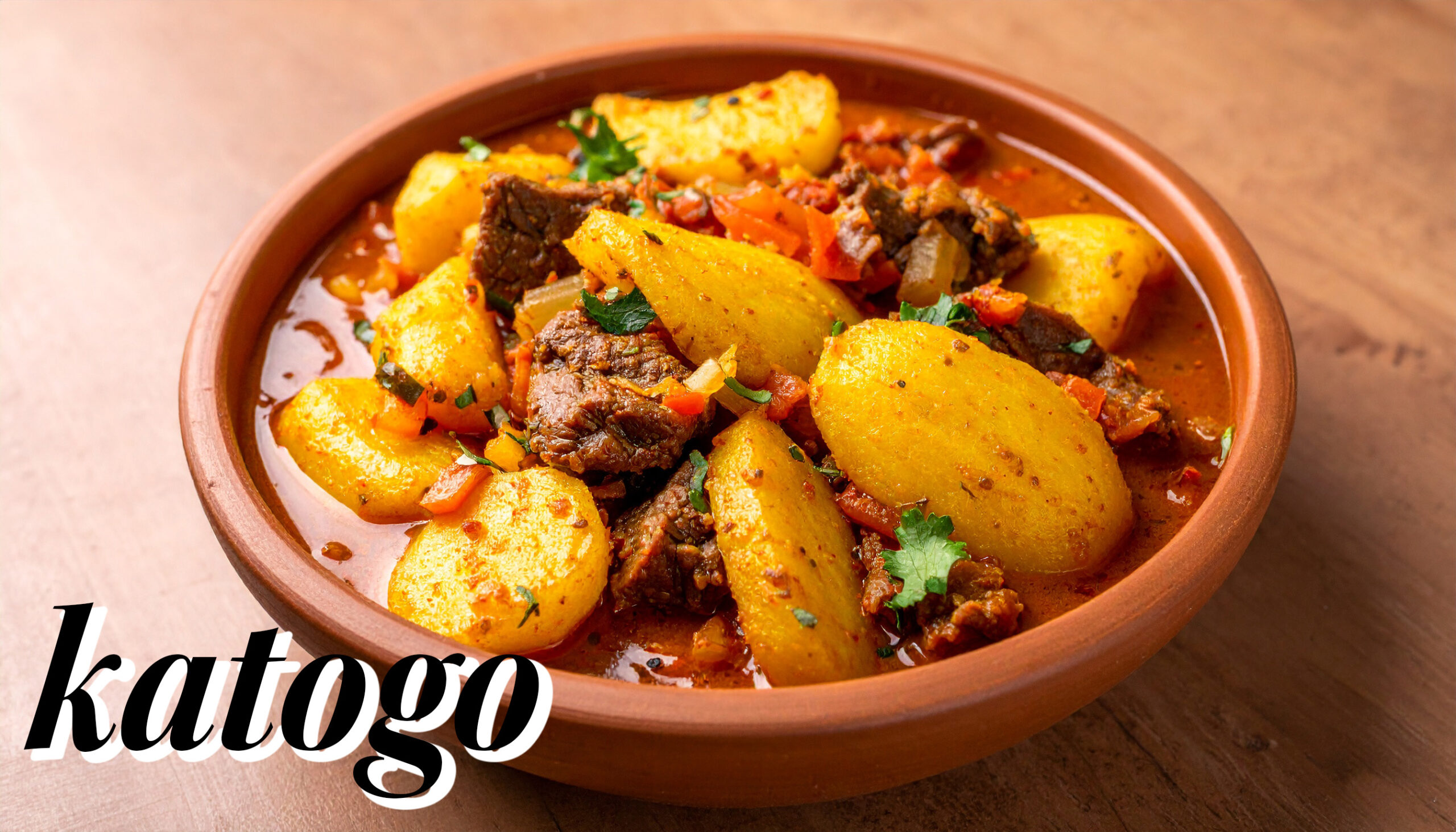
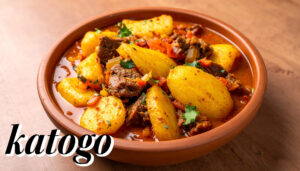
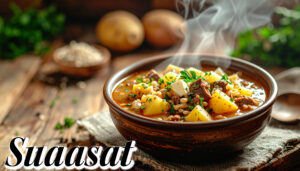

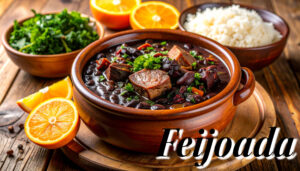



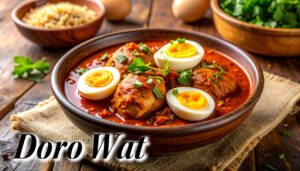

Comments